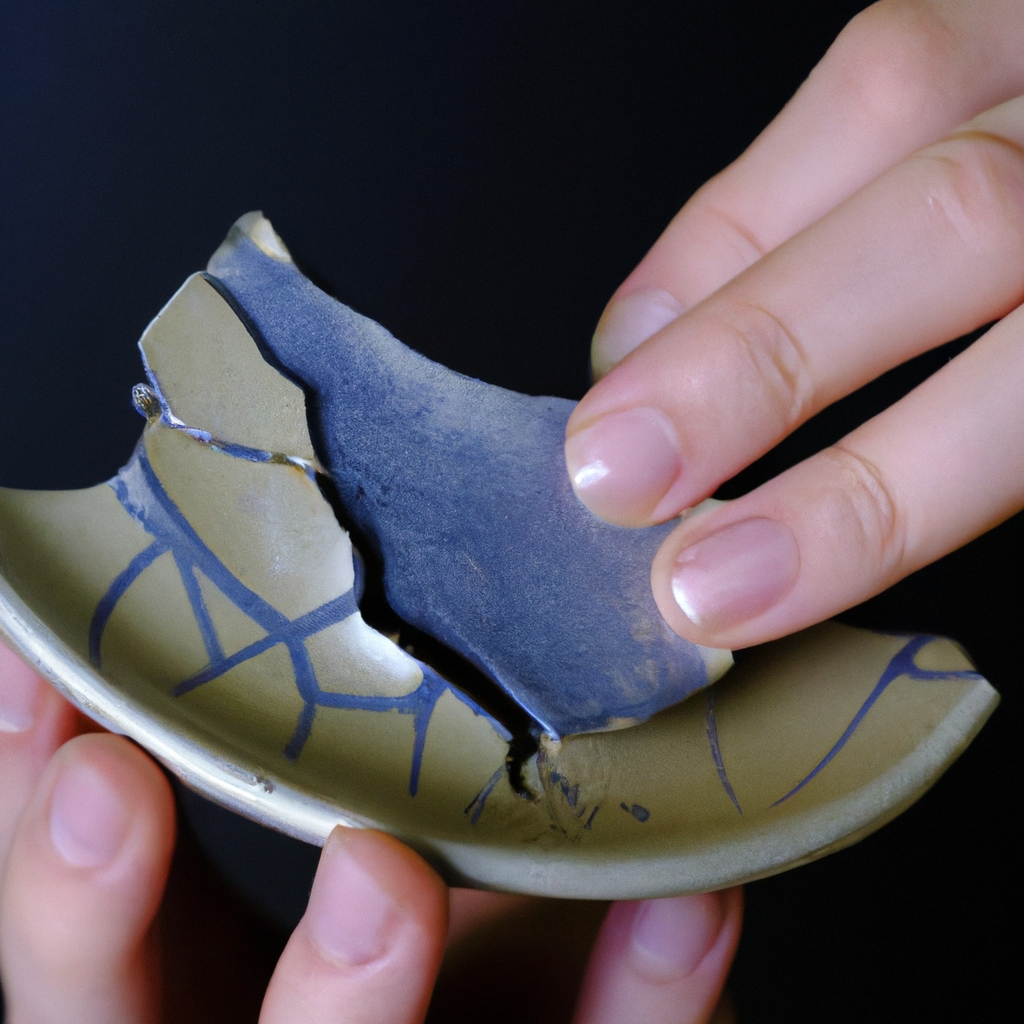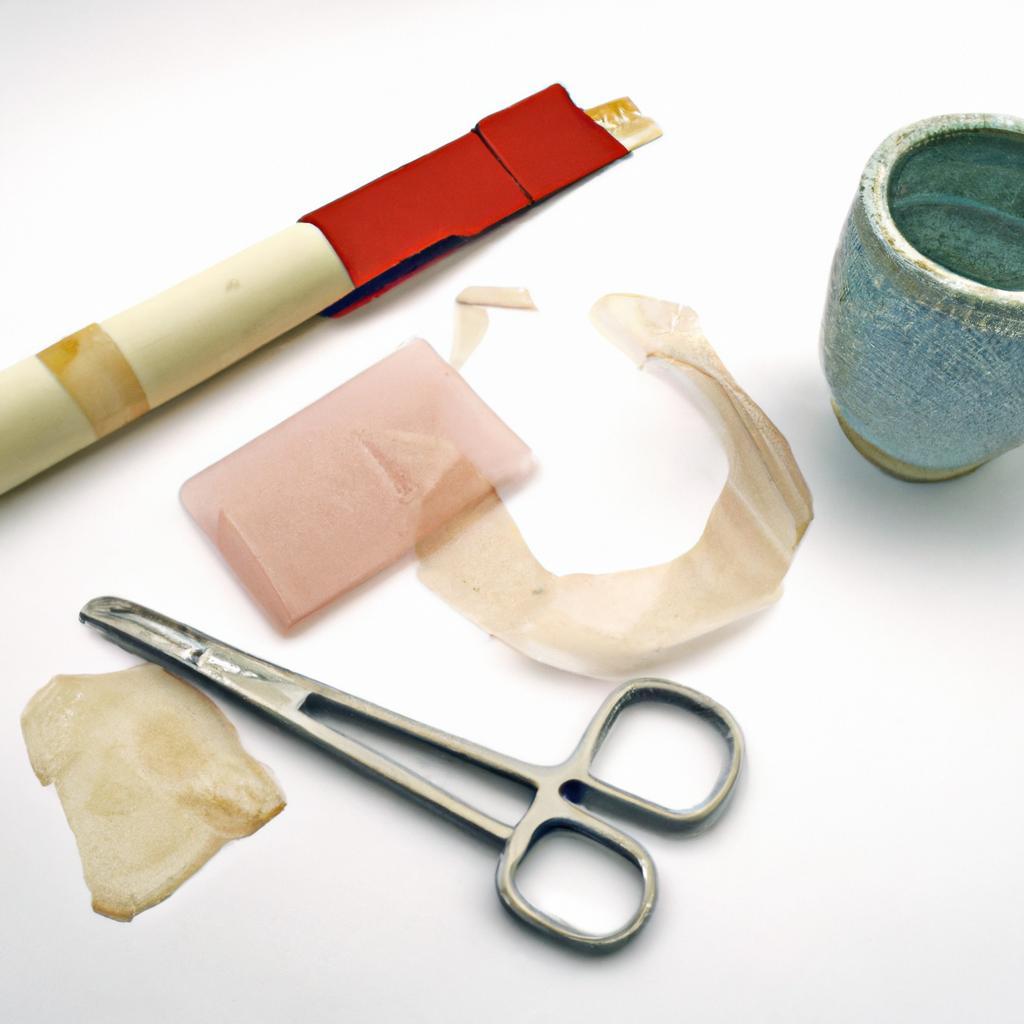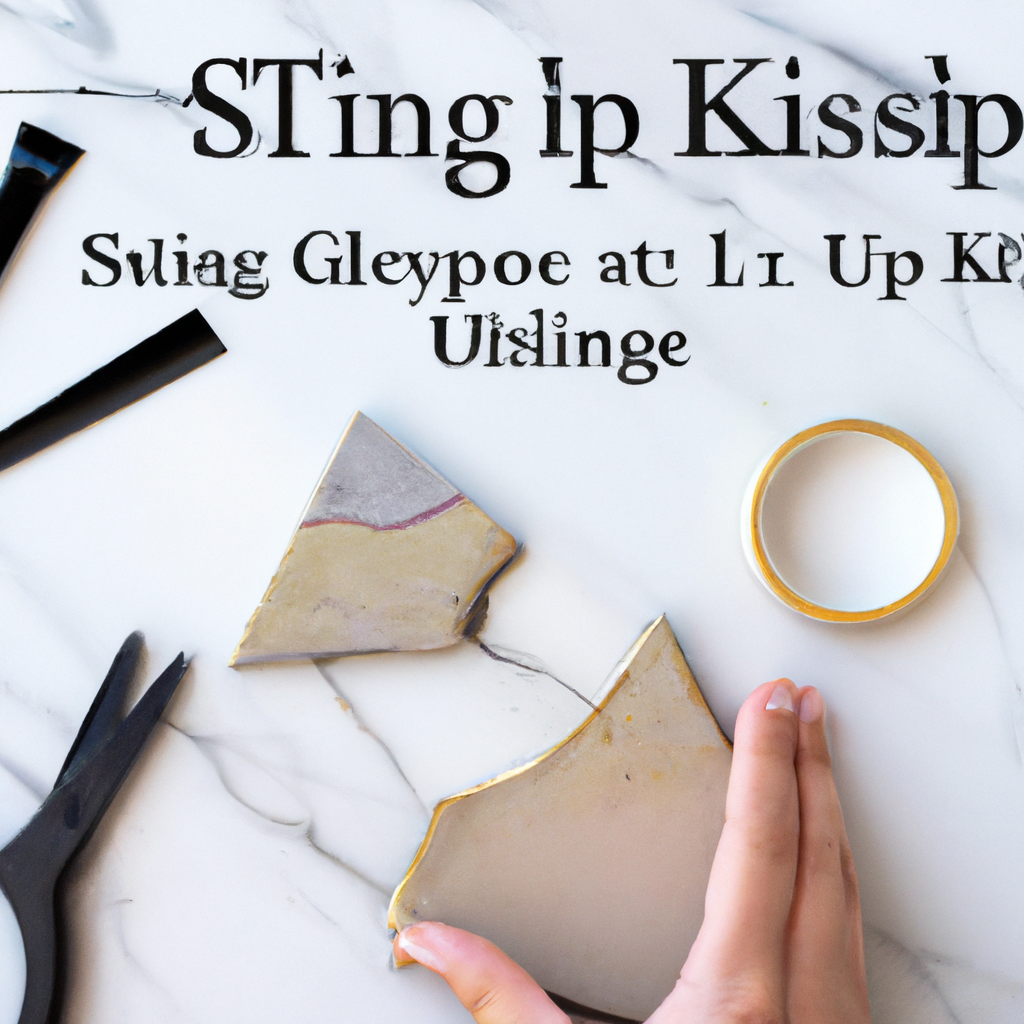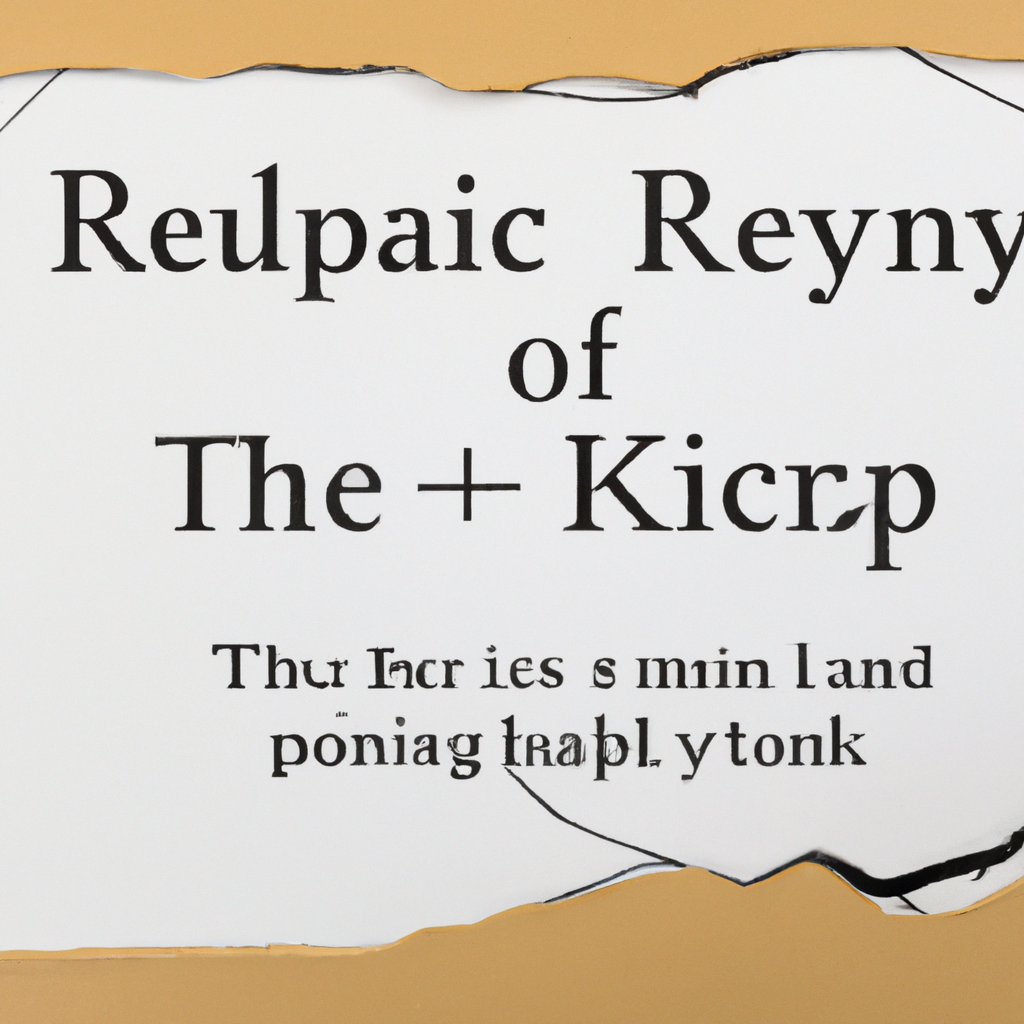In the landscape of the beautifully imperfect, a world bathed in golden seams and silver linings, exists the age-old Japanese art of Kintsugi. This technique transforms shattered ceramics into stunning pieces of art, telling a tale of resilience, rebirth and the beauty of imperfections. On this journey, we unravel the mysteries of ‘golden repair,’ offering an illuminating, hands-on guide to mastering this intricate technique. Glide with us through sparkling rivers of molten gold, as we take a refreshing dip into the mesmerizing world of Kintsugi repair. Embark on a voyage of discovery, learning to embrace flaws, renew broken objects, and see beauty in unexpected places. With each crack illuminated, Kintsugi whispers a gentle reminder: ‘Even in the broken and repaired, there is beauty’. Welcome to our guide on ‘How to Kintsugi repair.
Table of Contents
- Understanding the Art and Philosophy of Kintsugi Repair
- The Essential Materials for a Successful Kintsugi Repair
- Step-by-Step Guide to Your First Kintsugi Project
- Mastering the Process of Filling and Sealing Cracks
- Achieving a Harmonious Blend with Golden Finishes
- Preserving and Caring for Your Kintsugi Treasure
- Using Kintsugi Principles in Everyday Life
- Q&A
- The Conclusion

Understanding the Art and Philosophy of Kintsugi Repair
Kintsugi, a centuries-old technique originating from Japan, literally translates to ‘golden joinery’. This exquisite practice involves mending damaged ceramics with a special lacquer dusted with powdered gold, silver, or platinum, transforming broken items into a unique piece of art. Embracing the philosophy of ‘beauty in imperfection’, Kintsugi celebrates the damages and repairs as part of the object’s history rather than aiming to hide it. It resonates deeply with respect for the aging and fulfillment process, coordinating perfectly with the Japanese philosophy of ‘wabi-sabi’, implying a profound appreciation of the beauty in impermanence.
- Kintsugi: It teaches us to acknowledge and appreciate the history and journey of an object rather than discarding it because of its flaws. This approach involves policy towards acceptance and reconciliation with flaws and imperfections is applied, not just to objects, but can also be extended to our lives.
- Wabi-Sabi: It reminds us of the transience of life and the beauty of the natural aging process, a principle deeply rooted in Japan’s cultural and aesthetic values. It tells us to embrace the beauty in the myriad forms of nature, in its cycle of growth, decay, and death.
Solely repairing a ceramic with golden seams does not constitute the philosophy of Kintsugi; one needs to comprehend and appreciate the mindset behind this technique. Amid our quest for novelty and perfection, Kintsugi gently prompts us to pause, evaluate, and find beauty in what we might have considered damaged or flawed. It urges us to redefine our definition of ‘perfect’ and mirror this appreciation to all aspects of our lives, pointing out that something or someone made stronger by overcoming adversity is even more beautiful. By embracing our imperfections and learning to see the appeal in the imperfect, we can start to explore how the art and philosophy of Kintsugi can help us become more compassionate and appreciative of ourselves and others.
The Essential Materials for a Successful Kintsugi Repair
The art of Kintsugi or ”golden joinery” is a unique Japanese method to repair broken ceramics with a special lacquer mixed with gold, silver, or platinum. While the cracks remain visible, they become a beautiful part of the item’s history, symbolizing an embracing of flaws and imperfections. To successfully carry out a Kintsugi repair, certain materials are indispensable.
These include powdered gold or silver, which will be used to highlight the cracks and give the repaired ceramics their uniquely beautiful look. Another essential is the Japanese lacquer Urushi, a natural sap from the Urushi tree, used to bind the broken pieces together. If unavailable, you can substitute it with an epoxy adhesive. The mix would also require tonoko clay that acts as a filler alongside the urushi. Additionally, water and rice flour are necessary for making the ‘sabi’ or putty. Lastly, a small brush would be required to apply the lacquer and gold dust, and polishing cloth helps in providing an ever so shiny, smooth finish.
- Powdered gold or silver
- Japanese lacquer Urushi or epoxy adhesive
- Tonoko clay
- Water
- Rice flour
- Small brush
- Polishing cloth
Crafting a Kintsugi piece does not merely involve mending broken ceramics but also demonstrates an appreciation for the journey and transformations that objects undergo. It imparts a lesson to cherish each moment and recognize the beauty in the broken and healed.
Step-by-Step Guide to Your First Kintsugi Project
Embarking on your first Kintsugi project is an exciting journey; an artistic adventure that marries the old, the broken, with new vitality, creating a perfectly-imperfect masterpiece. This traditional Japanese art form involves repairing broken pottery with lacquer dusted or mixed with precious metals such as gold, silver, or platinum, highlighting the cracks and celebrating them as part of the object’s history rather than something to disguise.
Follow these simple steps to begin your journey in the world of Kintsugi. Preparation: Start by gathering your broken pottery and a Kintsugi repair kit, which typically includes the following:
- Japanese Urushi lacquers
- Gold or silver powder
- A paintbrush
- Japanese rice paste
- Water
Next, clean and dry all the broken pieces thoroughly. Use a strong adhesive to join the larger bits then fill in the smaller chips with putty. Once the adhesive has dried, sand down any excess to ensure a smooth surface.
Application: Proceed with mixing the lacquer with the precious metal powder to create a paste. Use the paintbrush to apply this along the cracks, wiping away excess with water. Allow the project to dry completely to reveal your artistic masterpiece.

Mastering the Process of Filling and Sealing Cracks
The art of effectively filling and sealing cracks is an essential skill that all homeowners must learn. Whether it’s a hairline fracture on your wall surface or a chipped section on the concrete of the garden pathway, arming yourself with the right techniques can make a world of difference. We are about to embark on a detailed journey that will sharpen your crack repair skills and boost your overall home maintenance IQ.
First, the process of filling does not just start with applying the filler compound. It begins with a thorough cleaning of the crack to ensure the filler sticks appropriately. Using a wire brush, scrub away loose pieces and particles, sweep it out, and even suck up the stubborn bits with a vacuum cleaner. Once you begin the application, remember that less is more. Don’t overwhelm the crack with filler in one go; instead, apply in small layers, waiting for each layer to dry before applying the next. When it comes to sealing, it’s no different story. Sealing requires a well-balanced approach – knowing the right time to seal (ideally when the filler is thoroughly dry) and choosing the right type of sealant. It is also helpful to bear in mind that while some cracks like those in concrete may benefit from the use of a sealant like silicone, others like drywall may not. It is crucial to make intelligent choices tailored to the particular crack repair venture at hand.
-
Process Summary:
- Thoroughly cleaning the crack
- Applying filler strategically in layers and allowing each to dry before application of the next
- Choosing the right kind of sealer and understanding the best timing for application

Achieving a Harmonious Blend with Golden Finishes
The art of blending gold finishes can be likened to weaving a fine tapestry. But instead of thread and needle, you’re employing your discerning eye for design to create a symphony of vibrant golden hues. Whether you’re trying to make a grand statement with an audacious gold chandelier or aiming for subtlety with delicate gold trim, achieving the right balance is crucial.
Let’s delve straight into how you can attain this graceful equilibrium. To create this balance, consider the various gold tones and finishes. For instance, matte gold possesses a muted elegance and blends well in modern interiors, while a glossy gold finish exudes more glamour and luxury. Also, try blending rose gold accents with yellow gold for a melodious juxtaposition of warm and cool tones. Pairing gold tones effectively can radiate a feeling of refined sophistication. Here are a few strategies to help you harmonize gold finishes in your decor:
- If you’re hesitant about using too much gold, you can mix it with silver for a more toned-down look. Silver is a cool-toned metal that complements the warm hues of gold beautifully.
- Try to incorporate gold in wooden elements in your home. This could be in the form of a gold-rimmed mirror or a wooden coffee table with gold accents.
- Don’t be afraid to play with different textures. Metals like gold can bring a unique sense of depth and dynamism to any space.
Remember, the goal is not to create a gold-themed space, but rather a well-orchestrated design that incorporates a hint of glamorous gold. So, allow your creativity to run wild, and find your unique blend of golden brilliance.
Preserving and Caring for Your Kintsugi Treasure
Embracing the beauty of repairing what’s broken, kintsugi holds a prized place amongst traditional Japanese art forms. Like any delicate masterpiece, your kintsugi treasure requires proper care and maintenance to preserve its beauty and reminisce its unique story.
To clean your kintsugi, it’s recommended to stay away from commercial detergents. Instead, a gentle touch with soft cloth dipped in diluted mild soap mixture works best. Rinse carefully with water, and then wipe down with a dry cloth. Regular cleaning, avoiding chipping and scratching, and displaying them out of direct sunlight are simple yet practical ways to prolong their life.
- Lightly wipe with a dry cloth regularly to keep it dust-free.
- Avoid chipping or scratching, as traditional kintsugi uses lacquer that can easily chip off.
- Keep your precious kintsugi out of direct sunlight to protect the ornate gold powder from fading.
A proper storage choice is equally essential. A tightly sealed cupboard away from extreme heat and moisture helps to maintain their condition. If you wish to store it in a box, make sure it is lined with soft, immovable padding. Never pile them up; they exhibit the best of their charm when set up individually.
- Store inside a cupboard that is not subject to any sort of extreme temperature or humidity.
- If storing in a box, line it with soft, immovable padding.
- Do not stack kintsugi pieces on top of each other. Their beauty needs space to radiate!
Proper maintenance of your kintsugi is not merely preserving an art piece; it’s cherishing an emblem of resilience and elegance, all the while valuing its cherished history of breakage and repair. It’s an embodiment of the powerful message that scars and recovery are integral parts of a beautiful journey.

Using Kintsugi Principles in Everyday Life
Embracing Imperfections
At the heart of the ancient Japanese practice of Kintsugi lies the philosophy of embracing imperfections and recognizing the beauty in their existence. This concept can be profoundly transformative when applied to our daily lives. To begin with, we need to acknowledge our flaws instead of being in constant denial or feeling ashamed of them. Whether it’s a failure, a physical trait we struggle to accept, or a past mistake, it is important to remember that these are the experiences that shape us and our identities. Our irregularities are not signs of weakness but indications of strength and resilience. They show that we have encountered trials, endured, and emerged stronger.
Repairing with Gold
In a symbolic sense, repairing with gold using Kintsugi principles implies acknowledging and addressing our personal wounds, insecurities, and traumas. It involves not shying away from seeking therapeutic intervention, counseling, or any necessary help that would allow us to ‘mend’. This could be spiritual healing, reconnecting with nature, meditation, or yoga. These are our ‘golden joineries’ that help us to heal and enhance our resilience. Also, it signifies forgiving ourselves for past mistakes, understanding that they were crucial for our growth and transformation. It encourages us to learn from our experiences and use them not as a reminder of our weaknesses past, but as a motivation for our strengths yet to come.
Q&A
Q: What is the idea behind Kintsugi repair?
A: Kintsugi is a traditional Japanese technique that embraces the philosophy of finding beauty in imperfection. It involves the process of repairing broken ceramics or pottery by using a special lacquer mixed with gold, silver, or platinum powder, turning the object’s imperfections into highlights.
Q: How does the process of Kintsugi repair work?
A: The very first step of Kintsugi repair involves gathering all the broken pieces of the ceramic object. Then, a lacquer resin is applied to fix the pieces back together while gaps and cracks are filled and covered with powdered gold. This process not only reassembles the piece but also enhances its aesthetic value.
Q: Can this technique be used for any broken pottery piece?
A: Yes, Kintsugi can be applied to various pottery artifacts regardless of their original state. It gives them a refreshed look, transforming the wreckage into an exquisite piece of art.
Q: Can one do Kintsugi repair at home?
A: Absolutely. Kintsugi, though traditional, is not limited to professional artists. It is a process that can be performed at home as well, with the right resources and patience to master the technique.
Q: What materials are typically used in Kintsugi repair?
A: In the traditional Kintsugi repair, materials include a Japanese lacquer known as Urushi, together with gold, silver, or platinum powder. However, there are modern versions of the technique that use more accessible materials such as epoxy resin and metallic powders.
Q: Does the process of Kintsugi take a long time?
A: Yes, Kintsugi is a slow and thoughtful process, it’s not just about repairing, but also musing over, appreciating and enhancing the broken pieces. It can take weeks to months to fully cure, depending on the size and shape of the ceramic piece.
Q: What is the key takeaway message from the process of Kintsugi?
A: Kintsugi teaches us to embrace the flawed and imperfect parts and to view them as an intrinsic part of our history, rather than something to hide. It shows how sometimes the traumatic events can make things more beautiful, precious and resilient.
Future Outlook
As we reach the end of our exploration into the art of kintsugi repair, remember that embracing fragility, acknowledging wear and tear, and celebrating imperfection, just as the core philosophy of kintsugi proclaims, is one of the most beautiful and profound ways to appreciate life. The endeared pottery, once reborn through kintsugi, resonates with the golden threads of resilience, telling fascinating stories of its restoration.
There is profound beauty in that which is repaired, in that which carries with it a history of living, breaking, and enduring. As you now embrace the delicate craftsmanship of kintsugi, you are not just wielding gold to mend porcelain, but also weaving narratives of persistence. Each time you fix a shattered piece, remember: you’re not merely fixing a broken ceramic. You’re imbuing it with a new life, adding yet another stroke to this beautiful canvas called existence. Kintsugi is not just a repair method; it’s a celebration of survival. The next time life seems to ‘crack’ you open, reflect on the kintsugi philosophy. Mend your cracks with gold and emerge more beautiful than ever.

